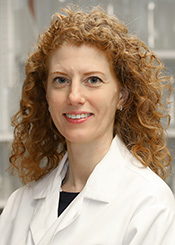Center for Advanced Microscopy
The Center for Advanced Microscopy exists to provide training, access, support and expertise to our user base in the area of microscopy. Our goal is to provide excellent technical support in a collaborative environment, facilitating access to cutting edge microscopy instrumentation. We support light microscopy, electron microscopy , and image analysis services across the whole range of spatial scales from whole organisms to single molecules. The facility’s basic services include electron microscopy, super resolution microscopy, fluorescent laser scanning and spinning disk microscopy, confocal atomic force microscopy, fluorescent lifetime imaging, automated high throughput tissue cytometry, laser capture microdissection, multiphoton imaging, and whole animal bioluminescent and fluorescent imaging. Our recharge structure includes both fee-for-service work and instrument access charges. We charge for services, such as data analysis, electron microscopy sample preparation and "assisted imaging" sessions, as well as user training and instrument time. We continually strive to provide our users with better instruction and guidance, as well as to ensure that our instrumentation is the best available and properly maintained.
Contact Us
Services & Equipment
Key Services
- Instrument training and assisted imaging
- Data analysis
- Customized analysis protocols
- AI analysis
- EM sample preparation
- Sample processing
- Thick sectioning
- Thin sectioning
- Platinum replica
- Immunogold staining
- Tomography
- Expansion Microscopy
- Poster printing
Equipment
- Bruker NanoWizard Sense+ AFM: An atomic force microscope coupled to confocal microscopy for surface imaging and force measurements of biological samples.
- FlexCell Fx-6000T Tension System: Applies strain to cells to mimic physiological conditions found in blood vessels, muscles lung etc.
- ImageXpress HT.ai Confocal: This high-content plate scanning instrument is equipped automated liquid dispensing and can image fluorophores (405, 445, 488, 515, 560, 640, 750) with both widefield and confocal modalities.
- LaVision UltraMicroscope II Light Sheet: Images cleared tissue in aqueous buffers or organic solvent.
- Leica DiveB SP8 Multiphoton: An upright mulitphoton microscope with two tunable lasers.
- Nikon AXR Confocal Laser Microscope System: A laser scanning confocal with 2K resonant scanning technology, large 25mm field of view and AI imaging settings.
- Nikon AXR Confocal Laser Microscope System w/ NSPARC: A laser scanning confocal with 2K resonant scanning technology, large 25mm field of view and AI imaging settings. Super resolution NSPARC detector and 8 line laser launch.
- Nikon AZ100 Multi-purpose Zoom Microscope: Covers a wide range of magnifications from 5x to 400x for imaging tissue.
- Nikon A1 Confocal Laser Microscope System: A laser scanning confocal.
- Nikon A1R+ Confocal Laser Microscope Systems (two systems): A laser scanning confocal with resonant scanning technology.
- Nikon A1RMP+ Multiphoton: An upright mulitphoton microscope.
- Nikon Biostation (two systems): An integrated cell incubator and microscopy system.
- Nikon Biostation CT: The Biostation CT is a high-content live-cell fluorescence imaging system for multi-well plate screening applications.
- Nikon N-SIM Structured Illumination Super-resolution Microscope: Utilizes moiré fringes to illuminate biological structures up to a resolution of 115 nm in multiple colors.
- Nikon SoRA: The Nikon SoRA is a super resolution spinning disk instrument build on an inverted Ti2 microscope . Designed around a Yokogawa W1, this instrument is capable of an approximately 1.4x improvement beyond the optical limit, which can further be improved by deconvolution to 2x.
- Nikon STochastic Optical Reconstruction Microscope: An inverted microscope that supports widefield, TIRF and STORM .
- Nikon Ti2 Widefield (two systems): Widefield systems for fluorescent (340, 380, 405, 445, 488, 560, 640 and 750) and RGB tiling and stitching of slides and multiwell plates.
- Nikon W1 Spinning disk with TIRF: A dual camera spinning disk confocal with a large field of view also capable of TIRF microscopy.
- SII LAGO: Capable of in vivo bioluminescent and fluorescent imaging of small animals.
- TissueGnostics: A high-throughput, automated, slide imaging system.
- Zeiss PALM Laser Capture Microdissection System: Uses a high precision microdissection laser and a catapulting pulse of defocused laser.
- FEI Tecnai Spirit G2: A 120kV transmission electron microscope (TEM).
- JEOL NeoScope SEM: Has up to 60,000X magnification and an Everhart Thornley type SE detector as well as high sensitivity solid state BSE detector.
- Leica EM ACE600 Coater: This sputter coater is equipped with a rotational and tilting 100mm stage which allows for angled deposition using gold, platinum targets and carbon rod evaporation in precise thicknesses.
- Leica Freeze Substitution System: Performs stepwise, microprocessor-controlled changes in fixation conditions.
- Leica Microtome UCT 6 and UC7: Uses a diamond or glass knife to cut ultra-thin sections of specimens.
- LKB Knifemaker: Allows users to create glass knives for electron and light microscopy sectioning.
Highlighted Projects
Studies on cancer metastasis
Kathy Green’s (TEAM) laboratory works on the role of cadherin-based cell-cell junctions called desmosomes in maintaining tissue homeostasis and is delineating how interference with their functions promotes cancer progression. In 2015 Dr. Green’s group published an article in the Journal of Cell Biologythat unveiled a novel role for protein arginine methylation in facilitating phosphorylation of the desmosomal protein desmoplakin to regulate junction dynamics. Interference with this pathway disrupts the ability of skin cancer cells to modulate adhesion strength in response to environmental stimuli. This article included FRAP data (Fig 1) acquired with the spinning disk confocal microscope in our facility and was selected for the journal cover. This work was supported by R01s AR041836, AR43380, GM037537, CA122151.
Reference: Albrecht et al. GSK3- and PRMT-1-dependent modifications of desmoplakin control desmoplakin-cytoskeleton dynamics. J Cell Biol. 208:597-612, 2015)
Functionalized nanoparticles targeting lymphoma
The lab of Colby Thaxton (TRIST) focuses on the development of nanomaterials for diagnostic and therapeutic applications, particularly relevant to cancer. This example was published in the high impact journal PNAS and includes TEM of HDL-NP in lymphoma cells that was performed in CAM. This paper represents an output from a collaboration between two LCC Members from different themes Thaxton and Gordon (HM).
Reference: Yang et al. Biomimetic, synthetic HDL nanostructures for lymphoma. Proc Natl Acad Sci U S A 110:2511-2516, 2013.
Vimentin filament dynamics and tumorigenesis
Vladimir Gelfand (TEAM) studies the cytoskeleton in malignant cells and is active in the development and application of advanced microscopy technologies. A 2015 paper (also the cover article) from his laboratory in the journal Molecular Biology of the Cell made extensive use of CAM instrumentation to study vimentin intermediate filament transport and subunit exchange. Transport of filaments (Fig. 2) was studied using both live-cell structured illumination microscopy and total internal reflection fluorescence microscopy. Subunit exchange in filaments was examined by long-term imaging after photo-conversion. The many contributions to this study by CAM were acknowledged, as was an instrumentation grant (1S10OD016342) that supported the purchase of the Nikon SIM system. This work was supported by a program project grant, P01GM09697.
Reference: Hookway et al. Microtubule-dependent transport and dynamics of vimentin intermediate filaments. Mol Biol Cell. 26:1675-86, 2015.
Role of SLFN proteins in Renal Cell Carcinoma
Dr. Platanias’s (MOM) laboratory studies the role of Schlafen (SLFN) proteins in different malignancies. In collaboration with Dr. Munshi’s (TEAM) group, they examined the role of human SLFN5 in the regulation of motility and invasiveness of renal cell carcinoma (RCC) cells. Â The investigators found that SLFN5 controls motility and invasiveness of RCC cells by regulating the expression of matrix metalloproteinase 1 gene (MMP-1), MMP-13, and several other specific genes. Â Importantly, they demonstrated that expression of SLFN5 correlates with a better overall survival in a large cohort of patients with RCC. The use of CAM was critical for the success of this work. Live-cell imaging to track migratory behavior was performed on a Nikon Biostation IM-Q Cell-S2 incubator wide-field microscope. The data provided by CAM contributed to this publication, which was supported by R01 grants CA161196, CA77816, and CA155566.
Reference: Sassano et al. Human Schlafen 5 (SLFN5) Is a Regulator of Motility and Invasiveness of Renal Cell Carcinoma Cells. Mol Cell. Biol 35:2684-2698, 2015.
Studies on human erythropoiesis and hematopoietic stem cells
Dr. Peng Ji’s laboratory focuses on the regulation of mammalian erythropoiesis, in particular erythroid cell terminal differentiation and hematopoietic stem cell biology. In 2015, Dr. Ji’s lab reported in the journal Developmental Cell their findings of a transient and recurrent opening of the nucleus, through which histones are extruded during nuclear and chromosomal condensation, during terminal erythropoiesis. This opening was visualized through live-cell 3D confocal microscopy in suspension cells (Fig 4), an extremely technically challenging imaging procedure. Dr. Ji’s findings may have implications for the development of myelosysplastic syndromes, in which a failure of the nuclei to condense is one of the key features of dyserythropoiesis. This study, a collaboration between two LCC members from different programs, Ji (HEM) and Rappoport (MOM), was supported in part by LCC’s Physical Sciences-Oncology Center (U54CA143869).
Reference: Zhao et al. Nuclear Condensation during Mouse Erythropoiesis Requires Caspase-3-Mediated Nuclear Opening. Dev Cell. 36:498-510, 2016.
Acknowledgement
All manuscripts and grants presenting work supported by this core should include the following acknowledgement:
- General acknowledgment: Imaging work was performed at the Northwestern University Center for Advanced Microscopy (RRID: SCR_020996) generously supported by NCI CCSG P30 CA060553 awarded to the Robert H Lurie Comprehensive Cancer Center.
- Andor Spinning Disk: Spinning disk confocal microscopy was performed on an Andor XDI Revolution microscope, purchased through the support of NCRR 1S10 RR031680-01.
- Nikon Biostation CT: High content imaging was performed on the Nikon Biostation CT system purchased with the support of NIH 1S10OD021704-01.
- Nikon Multiphoton: Multiphoton microscopy was perform on a Nikon A1R multiphoton microscope, acquired through the support of NIH 1S10OD010398-01.
- Nikon N-SIM: Structured illumination microscopy was performed on a Nikon N-SIM system, purchased through the support of NIH 1S10OD016342-01.
- Nikon SoRa: Super resolution spinning disk microscopy was performed on a Nikon SoRa system, purchased through the support of NIH 1S10OD032270-01
- Zeiss PALM: Microdissection was performed on Zeiss PALM laser catapulting microdissection system purchased with the support of NCRR 1S10RR025624-01.
For example, if a user uses the PALM system, then the acknowledgment should read:
“Imaging work was performed at the Northwestern University Center for Advanced Microscopy generously supported by CCSG P30 CA060553 awarded to the Robert H Lurie Comprehensive Cancer Center. Microdissection was performed on Zeiss PALM microdissection system purchased with the support of NCRR 1S10RR025624-01.”
Users should also send a PDF copy of the papers they publish to Constadina (Dina) Arvanitis, PhD.
Core Navigator
 For guidance on which cores may be most useful for your research and to coordinate use, please use the AI-powered Core Navigator chatbot, use the information request form or contact Sara Fernandez Dunne at s-fernandez@northwestern.edu or 847.491.5960.
For guidance on which cores may be most useful for your research and to coordinate use, please use the AI-powered Core Navigator chatbot, use the information request form or contact Sara Fernandez Dunne at s-fernandez@northwestern.edu or 847.491.5960.
